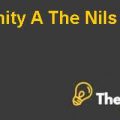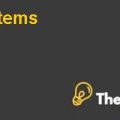
VALE: GLOBAL EXPANSION IN THE CHALLENGING WORLD OG MINING Case Solution
Problem Diagnosis
Vale, a Brazilian diversified management company, which is also the largest iron ore producer in the world, was facing pressure from two different sides. On the other hand, the company was facing the pressure from the government of the country and it’s President of Brazil, Lula for investing in integrated still mills in Brazil. Lula, who was also a former union leader, was pressurizing Vale through its minority interests and the golden shares held in the company to invest in integrated still mills in Brazil because since the 2008 financial crisis, and the layoff of its employees as a result of that, the company had moved far away from Brazil.
Roger Agnelli, the CEO for Vale, was facing significant political pressures from Lula and as a result, both of them decided to meet for finding a solution to this problem in October 2009. This report attempts to analyze the core issues, current position of Vale and analyze the range of options for Agnelli and then recommend a the best strategy to Agnelli for dealing with the political pressures at home and deciding about the investment of the large vessels for shipping the iron ores to Asia especially China.
Case Analysis
The analysis for this case emphasizes on a range of issues. First we begin with the evaluation of the performance of Vale after its privatization in 1997.
Privatization of Vale in May 1997
The privatization of Vale in 1997 made sense because of the instable economy, hyper inflation and the high budget deficits. Therefore, it made less sense to finance the government of the country. The Brazilians also supported the less intervention of the government in the economy. However, when Vale was included in the privatization program, it was faced with criticism and protests, because Vale was considered as the national symbol by the left wing parties. Nonetheless, despite these criticisms, the supporters of the privatization stated that the operations of vale required no important technology therefore, the intervention of the government did not make sense.
As a result, Vale was privatized in 1997 with the highest bid by the pension fund, SOE and government development bank, BNDES. Together they held a voting equity of 41.73% of Vale. Despite the privatization of the company, the government had kept important voting right through its equity in Vale. The golden shares were also held by the company which gave many voting rights to the government to make decisions such as changing company name, its objectives and missions. However, later this shareholding had reduced to only 11% in 2009 as seen in exhibit 2.
The privatization has proved to be a success for the company. If we look in exhibit 3 of the case, then we can see that the revenues, net profit and the net profit/net worth ratio of the company had increased significantly for Vale after the privatization of the company. This was because of the aggressive diversification strategy of the company which it was not able to implement before privatization. The growth of investments after privatization in exhibit 3 provides evidence for this. The iron ore production also increased significantly along with the exports to other countries. Therefore, the privatization of Vale in 1997 proved to be successful for the company.
Influencing the Vale Board through Government Minority Interest and Golden Shares
The shareholding of all the major shareholders in October 2009 of Vale, after the privatization of Vale, could be seen in the bar and the pie charts in the appendix attached to this report. The total shareholding held by the Brazilian government is 11.51% through BNDES Par. BNDES Par is the holding company which managed the equity holdings of the National Bank of Economics and Social Development. This could be seen in exhibit 1, 2 and 3 attached in appendices. The equity held by the government through BNDES Par and some other pension funds could influence some of the decisions of Vale. For example, Banco do Brasil, which is a government owned bank, also participated in the selection of the Previ executives.........................
This is just a sample partial case solution. Please place the order on the website to order your own originally done case solution.













